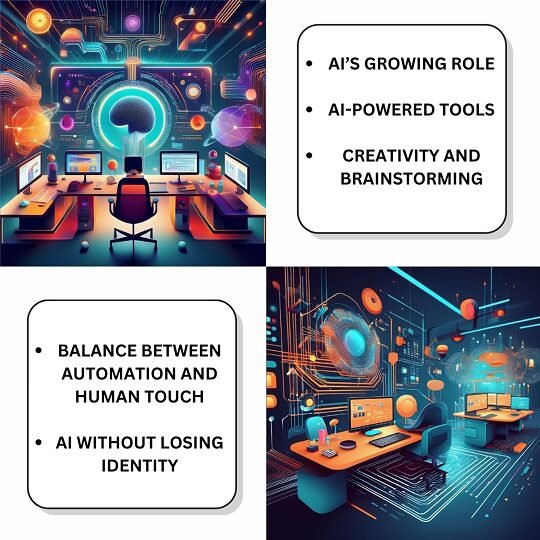The Influence of Artificial Intelligence on Modern Graphic Design

1. Introduction: AI’s Growing Role in Creative Industries
Over the last few years, Artificial Intelligence (AI) has revolutionized nearly every industry, and graphic design is no exception. From automated design generation to intelligent layout suggestions, AI has changed how creative professionals work and what clients expect. But with this rapid shift comes a crucial question: Is AI a threat or a tool for designers?
The reality lies in how AI is embraced. Rather than replacing human designers, AI tools are enhancing productivity, encouraging creativity, and streamlining design processes. Let’s explore how AI is influencing the graphic design space.
2. AI-Powered Tools: Changing the Design Workflow
Modern graphic design now heavily involves AI-based platforms such as Adobe Firefly, DALL·E, Canva’s Magic Design, and MidJourney. These tools perform functions that once required hours of manual effort. Here’s how they’ve changed the workflow:
- Automated Image Editing: Background removal, smart cropping, and retouching can be handled in seconds.
- Color Palette Suggestions: AI suggests color schemes that match brand aesthetics and user preferences.
- Layout Generation: Smart algorithms can suggest or even build layouts optimized for various platforms.
These capabilities mean designers can now shift their focus from routine, time-consuming tasks to high-level creativity and strategy. AI reduces the grunt work and gives room for innovation.
3. Enhancing Creativity and Brainstorming
Creative blocks are real, even for the most seasoned designers. This is where AI shines as a creative companion, not a competitor. Using AI in graphic design can help generate fresh ideas, offer variations of logos or layouts, and introduce unexpected inspirations.
For example, AI can:
- Provide multiple visual directions for a design brief.
- Generate mood boards and themes based on a single keyword.
- Help designers explore new graphic design trends.
Rather than stifling creativity, AI stimulates it. It opens the door to broader possibilities, especially when working with tight deadlines or vague client briefs.
4. The Balance Between Automation and Human Touch
While AI can automate processes, it cannot replicate the human element—the emotional intelligence, cultural sensitivity, and storytelling that make a design truly resonate.
Here are things AI still can’t fully master:
- Emotional connection: A human designer can evoke feelings through visuals tailored to specific audiences.
- Cultural nuance: Design is deeply rooted in cultural and contextual understanding, which AI may overlook.
- Strategic problem-solving: AI lacks the critical thinking and brand strategy insights of an experienced designer.
Design is more than visuals — it’s about communication, empathy, and purpose. The best outcomes arise when AI and human creativity work together, with designers guiding the vision and AI offering executional support.
5. Conclusion: Embracing AI Without Losing Identity
AI is no longer a futuristic concept in graphic design — it’s a powerful tool already reshaping the industry. From automating repetitive tasks to enhancing idea generation, it’s transforming how designers work and what they can achieve.
However, it’s vital to remember that AI is a tool, not a replacement. The most effective design solutions will continue to be born out of human creativity, intuition, and experience, empowered by intelligent technologies.
As we look toward the future, the designers who thrive will be those who understand how to blend AI capabilities with their own creative instincts. Instead of fearing replacement, the design community should view AI as a collaborative force — one that enhances quality, speeds up production, and unlocks new creative horizons. To learn more about how AI and creativity intersect in modern marketing and design, visit 361 Degrees Marketing.
- Written by: 361 Degrees Marketing Team
- Posted on: May 19, 2025
- Tags: 361degreesmarketing, AI in Graphic Design, Modern Graphic Designs

